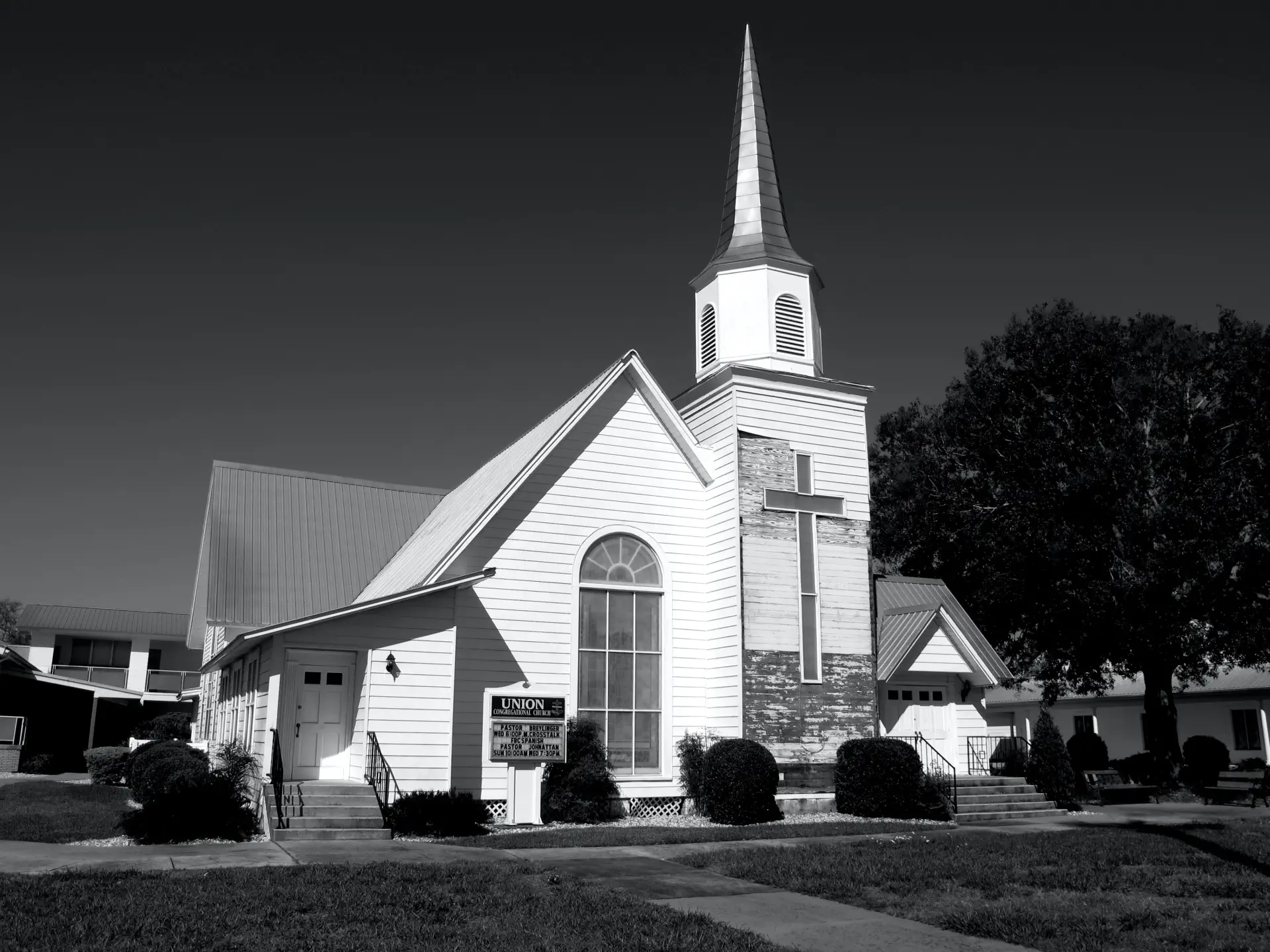The “sinner’s prayer” emerges quietly in one’s heart when a person fully realizes their sinful nature and need for a Savior. Simply saying this prayer does not automatically fix our brokenness with God. Rather, the essence of the prayer is a heartfelt confession of sin and an earnest desire for God’s redemptive grace and salvation through faith in Christ.
In recent decades, the sinner’s prayer has received both strong support and criticism. Supporters believe it gives people a clear way to express the faith they are placing in Christ. Critics say it can falsely assure salvation without real repentance by emphasizing the recitation of specific words rather than genuine faith. We will be examining this conflict in this article.
I. Introduction
A. What is the Sinner’s Prayer
The “sinner’s prayer” refers to a specific prayer someone says when they wish to repent of their sins and accept Jesus Christ as their Lord and Savior. The prayer typically admits they are lost in sin, acknowledges the saving power of Christ’s death and resurrection, expresses repentance, and a desire to live differently. Many evangelists see the sinner’s prayer as the goal of their efforts to convert non-Christians. While saying this prayer does not itself save a person, it should reflect their faith in Christ’s redemption, which does save them. A common sinner’s prayer might say:
“Dear God, I know I’m a sinner, and I ask for your forgiveness. I believe Jesus Christ is Your Son. I believe that He died for my sin and that you raised Him to life. I want to trust Him as my Savior and follow Him as Lord, from this day forward. Guide my life and help me to do your will. I pray this in the name of Jesus. Amen.”
B. Brief History and Explanation of the Sinner’s Prayer
The sinner’s prayer is not directly stated in Scripture but is based on early Christian traditions of repentance and turning to Christ. In more recent centuries, it has been an important part of evangelical Christianity:
Early Church: Repentance and confession of sin have long been understood as essential to receive Christ’s salvation. The New Testament repeatedly calls people to repent and have faith in Jesus (e.g., Acts 3:19, Romans 10:9-10).
Revivalism: The sinner’s prayer can be traced to the revival movements in the 18th and 19th centuries, especially in the U.S., where preachers urged people to personally respond to the gospel, often through a prayer.
Modern Evangelicalism: In 20th century crusades, in particular those led by Billy Graham, attendees would come forward and commit to Christ through prayer.
Sinner’s Prayer is brief and to the point. When prayed one acknowledges their personal sinfulness, expressing a desire for forgiveness, and affirming faith in Jesus Christ for salvation. For instance: “God, I know that I am a sinner. I believe Jesus died for my sins, and I ask for your forgiveness. I trust in Jesus as my personal Lord and Savior. Amen.”
C. Overview of the Criticisms Surrounding Its Usage
Despite widespread use, the sinner’s prayer has critics. These include Christian writers like William Nowell, Greg Koukl, David Platt, and John McArthur. They worry the prayer’s simplicity promotes misunderstandings about faith and salvation, reducing a life-changing experience to repeating words.

These writers argue that one prayer, while potentially a good start, does not fully capture the complexity of faith or guarantee salvation. They caution against false assurance and emphasize understanding Jesus’ teachings, ongoing repentance, and an active relationship with Christ. As David Platt explains, the prayer is often misused and misunderstood, resulting in a superficial view of the gospel and salvation. William Nowell says:
“Many people believe the sinner’s prayer alone will gain them entry to the Kingdom of God. Unfortunately, this mindset inevitably leads to “easy believism”
Some Reformed theologians worry the prayer makes individuals think just reciting words ensures salvation. Reformed theology stresses God’s control over salvation and believers demonstrating continual faith and good works. The concern is the prayer offers an oversimplified view of conversion and faith.
II. Successes of the Sinners Prayer
While criticisms and concerns about the Sinner’s Prayer may have merit, it’s also essential to acknowledge the countless instances where this prayer served as a catalyst for genuine conversions and lasting change in the lives of many believers.
A. Historical Impact
Throughout history, the prayer enabled revivals and evangelism crusades to reach people. In the 18th-20th century Great Awakenings and crusades by preachers like Jonathan Edwards, George Whitefield, and Billy Graham, the prayer helped spur widespread spiritual renewal. Graham’s ministry alone reached 215 million globally. These efforts, using the sinner’s prayer, not only brought millions to Christ but reshaped cultures.

Missionaries have also used this prayer effectively, translating it into diverse languages and cultures. This strategy, along with global crusades, has spread the prayer worldwide. Christianity’s dramatic growth in Africa, Asia and Latin America suggests the prayer has played a significant role in global evangelism.
B. Contemporary Impact
Many people share stories of the sinner’s prayer starting their faith journey—a first step leading to knowing Christ deeply.
Accounts exist of entire communities transforming due to evangelistic outreaches that employed the Sinner’s Prayer. These communities have seen decreased in crime, reconciled divisions, and increased charity—reflecting real spiritual change.
One great example is the decades-long Billy Graham crusades, monumental evangelistic events reaching countless people globally. Beyond numbers alone, the profound personal stories emerging reveal deep impact.
Well-known figures like Johnny Cash testified Graham, through use of this prayer, deeply influenced them spiritually. But Graham’s ministry mostly affected ordinary people burdened with brokenness. They left with hope and transformation after responding to the gospel with prayer.
The life transformations observed in those who sincerely pray the Sinner’s Prayer present a compelling argument for its effectiveness. Individuals freed from addictions, crime and despair share how, prayed sincerely, this prayer marked great spiritual turning points. While not magical, prayed genuinely, it facilitates profound life change.
III. Problems and Dangers of the Sinner’s Prayer
Many individuals encounter Christianity through the Sinner’s Prayer, a simple plea to God for forgiveness and salvation which should reflect our newfound faith in Christ. There is nothing wrong with repeating the Sinner’s Prayer as an act of contrition and prayer for salvation. It likely a good first step on the “narrow road that leads to life.” (Matthew 7:14). However, the simplicity and brevity of the Sinner’s Prayer, has potential downsides requiring caution.
A. Failure to Apply Faith
We must guard against simply possessing head knowledge about Christ rather than a lifesaving faith. While faith requires nothing of us it will result in evidence of its action in our lives. This is what James is writing about when he chastises people claiming faith yet not demonstrating it, saying even demons believe in God (James 2:18-24). True faith shows itself through good works. Of course, works don’t save us – only faith in Christ (Romans 3:28). Saving faith is tied directly to trust. We must not just know Christ can save but trust He will. Simply reciting the sinner’s prayer without faith does not save.
B. Misuse and Misunderstanding
Pastor David Platt shares his story misusing the prayer as a child. When doubting his salvation, he would repeat it, hoping he “really meant it this time.” This is a misunderstanding of how saving faith works. The challenge is to not just present the sinners prayer, but why we pray it. Pastor Platt’s story demonstrates the prayer’s potential for abuse when we misunderstand the message of salvation.
C. False Assurance
Relying on the prayer like a mystical incantation can falsely assure salvation without real repentance and faith. The words alone don’t merit salvation. Failing to truly grasp the gospel message, some think just saying the prayer secures them a place in heaven. This “easy believism” leads to complacency, missing Christ’s deeper call.

Many Pastors and Christian leaders have seen people say this prayer yet lack lasting faith, eventually falling away. Paul might have been thinking of these very people when he writes in 2 Tim 3:1-5, of them having “a form of godliness but denying its power.” The prayer risks giving false confidence of right standing with God.
IV. Understanding Belief and Faith
Faith is essential for becoming a follower of Christ, as stated in Ephesians 2:8: “For it is by grace you have been saved, through faith.” We often oversimplify faith to a one-time decision, but the Bible shows it is complex and transforming.
A. Biblical Understanding of Belief and Faith
In Scripture, “belief” and “faith” emerge profoundly intertwined. The Greek words for “believe” (pisteuo) and “faith” (pistis) share the same root, indicating their common connection.
When John 3:16 invites “whoever believes,” it means more than mental agreement but entrusting one’s whole self. Paul champions “faith” as the way we are made righteous through Christ before God. This faith is essential to believing (Romans 10:9). Here, the heart’s belief – anchored in trust and faith – and the mouth’s confession come together resulting in salvation.
In Acts, the early church’s response to the gospel consistently focuses on “believing.” Recall the jailer’s plea in Acts 16, answered with the profound yet simple instruction: “Believe in the Lord Jesus.” This belief represents total trust.
Hebrews 11:1 most beautifully defines faith as “assurance of what is hoped for, the conviction of things not seen” – a perfect blend of trust (assurance) and belief (conviction). True belief in Christ wraps itself in faith, characterized by trust, steadfast commitment, and a relationship with our Savior. Examining this tapestry of salvation we find belief and faith emerge, not as isolated ideas, but as intertwined strands forming the fabric of our relationship with Jesus.
B. The Active, Ongoing Nature of Faith
The New Testament presents two complementary perspectives on faith – from Paul and James. Paul says we are saved by faith apart from works (Ephesians 2:8-9). But verse 10 clarifies that the same faith also produces good works, as we are “created in Christ Jesus” for them. So, faith actively moves us to serve God’s kingdom and others.
James challenges the idea of faith without works in James 2:14: “What good is it, my brothers, if someone says he has faith but does not have works? Can that faith save him?” This describes “dead faith” – superficial without regenerative effect. James assumes true faith does save. He argues faith without deeds is inauthentic, in fact is not faith at all. In this case, the individual professes salvation falsely, not having been truly saved. James is consistent that works don’t save, they must flow from real faith. True faith transforms behavior through lifelong commitment to God’s commands.

So, in different ways, Paul and James present faith as not passive, but active – producing both salvation and a life of good works. Dead faith lacks this fruit but living faith fuels ongoing life change and selfless service.
C. Understanding and Conviction’s Role
True faith requires more than passive acceptance of beliefs – it involves understanding and internalizing them. As Romans 10:17 states: “Faith comes from hearing the word of Christ.” Scripture cultivates informed faith rooted in conviction and informed by our trust. This is the heart of the gospel that we can know Christ. This conviction persuades our hearts, influencing thoughts, actions and lives.
Paul expressed this in 2 Timothy 1:12: “I know whom I have believed, and I am convinced that he is able to guard…what has been entrusted to me.” His faith surpasses mere agreement – it is deep trust in Christ that carried him through numerous trials and tribulations.
V. The Cross: The Core of Christian Salvation
At the heart of Christianity lies the transformative power of the Cross. Jesus, though fully God, took on humanity, humbled Himself to death on a cross (Philippians 2:5-8) to save us. Accepting this through faith and trust in Him is central to salvation. We must hear and understand the message before we can fully trust it.
A. The Apostles’ Creed: Essence of Faith
The Apostles’ Creed is one of Christianity’s oldest and most universally accepted statements of faith. It states tenets of faith that have guided believers since the early church. Equally it is essence of what the Christian believes when they place their trust in Christ. It reads:
“I believe in God the Father Almighty, and in Jesus Christ, His only Son, our Lord; Who was conceived by the Holy Spirit; Born of the Virgin Mary; Suffered under Pontius Pilate; Was crucified, dead and buried; He descended into Hell; The third day He rose again from the dead; He ascended into heaven; And sits on the right hand of God the Father Almighty.”- Apostles’ Creed
We can say with confidence this is what Paul meant when he wrote in Romans 10:9-10:
“If you confess with your mouth the Lord Jesus, and believe in your heart that God has raised him from the dead, you shall be saved. For with the heart man believes, resulting in righteousness, and with the mouth he confesses resulting in salvation”
To Paul’s Jewish culture, the “heart” meant our inner being and thoughts. Thus “heart faith” means deep conviction and trust in core truths.
B. Salvation Through Faith
This Creed shows salvation comes only by faith in Jesus’ redemption, not human effort (Ephesians 2:8-9). Faith is critical. Trust puts that faith into action. Like knowing a chair can hold you doesn’t exercise faith in it until you actually sit down. That’s trust. Trusting Christ’s sacrificial death through faith alone reconciles us to God. It is salvation’s bedrock.

C. True Faith
Mere intellectual agreement on Jesus’ life and resurrection is inadequate. James 2:19 warns: “Even the demons believe that—and shudder.” True faith requires trusting Jesus personally as Savior and Lord, resulting in intimate relationship and transformation.
While simple, the implications are profound. It does not demand works for salvation but compels them as grateful response (James 2). Believers embody this faith through Christ-centered lives displaying the gospel’s power.
While the sinner’s prayer can express commitment, it is the faith behind it bringing salvation – trusting Scripture’s witness to Christ. Through this faith, lives change.
VI. Conclusion
In evangelism, our concern should be whether people truly grasp the full gospel – their fallenness and needing Christ’s redemption through faith. We plant seeds, the Holy Spirit brings understanding and conviction of needed salvation.
Certainly, the sinner’s prayer can help new believers grasp the gravity of this commitment. But if checking off that prayer is our only aim, we fail. We may lead them into empty religion versus a joyous relationship with Christ.

Our mission is producing followers who embrace truth through faith and live it out through Christ-like character. We must impress on potential converts that repentance is just the beginning. They need scripture, community, regular prayer – things replicating disciples into becoming like Jesus. That strength sustains them through storms and trials when their faith undergoes testing. It keeps them from abandoning their faith and walking away. We owe it to equip new believers for the journey ahead.
We come full circle and ask – Is the Sinner’s Prayer Enough for Salvation? The short answer is “No”. The Sinner’s Prayer does not save you. However, the better answer is “Yes, if…”. Yes salvation is possible if the belief and faith encompassed in the Sinner’s Prayer reflects the heart’s true conviction and faith and trust in the saving work of Jesus Christ are present – then it certainly does have the power to save.
What to Read Next:
If you liked this article or want to learn more about salvation be sure to read these related articles:
- Becoming a Christ Follower
- The Next Step in Your Journey: Discipleship (TBD)
History of this Article
I originally wrote this article in July of 2023. I was concerned about so many people engaging in “easy believism” as William Nowell calls it, and the resulting flood of people who were once believers renouncing their faith. This phenomenon is often called deconversion. I received some criticism that this article complicated the simple act of believing in Christ and becoming a follower rather than stating a clear case. It was a fair critique and I have since then revised the article. For some specific information on becoming a Christ follower see the article just published: Becoming a Christ Follower.
I rewrote this article on December 6th, 2023 to improve the readability of the text. The content of the article stays the same. In fact, I have written a few ambiguous areas more clearly, which I hope will communicate the intent of the article more clearly. I am considering posting the original article outside of Google’s page crawling reach if people are interested in reading it. Thanks.




